Elephants
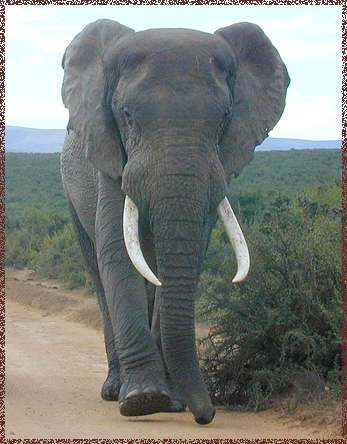
Threats: Scientists consider the African Elephants a "threatened" species. It is also listed as a "threatened" under the U.S. Endangered Species Act.
Elephants are the largest land animals which can grow up to 11 feet at the shoulder. They have an average length of 20-24.5 feet and weigh more than six tons.
Their potential life span is 60 years, but today only about 20 percent survive to reach 30.

What do elephants eat?
Elephants eat as much as 300 lbs. of food during an 18 to 20 hour day. Half of the food that they eat leaves the body undigested. Their diet consists of bark, grass, roots, and other woody parts of trees. They drink up to 19-24 gallons per day. They can dig holes with their trunks during a drought to get water.
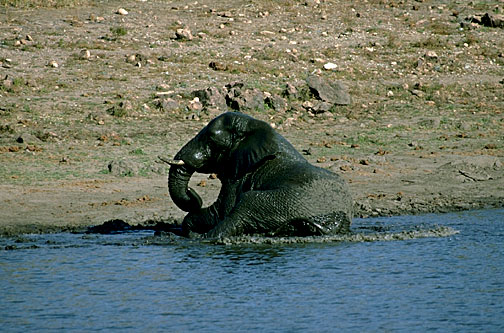
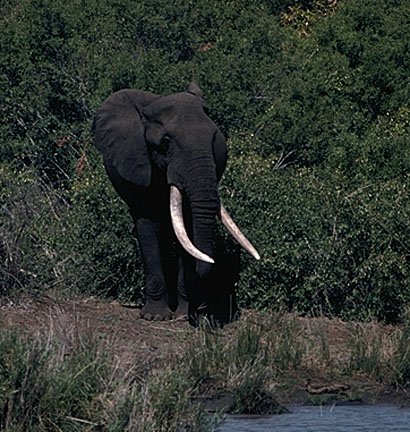
What are some physical characteristics?
Both male and female African elephants have tusks which are either straight or curved upward. Tusks a upper incisor teeth which appear at the age of two. They continue to grow all through the elephant's life and are used in feeding, weapons, or in social encounters. The large skull supports the trunk, enormous molars, and tusks. Their skin is very sensitive, requiring frequent bathing, massaging and powdering with dust to remain parasite and disease free. The trunk is formed from the elongated nose and upper lip. This enables the elephant to eat grasses on the ground, and vegetation on the trees. Huge ears help the elephant lose body heat.
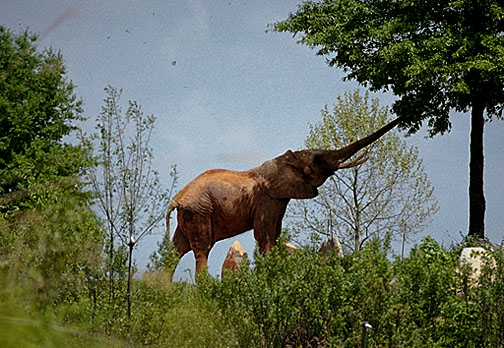
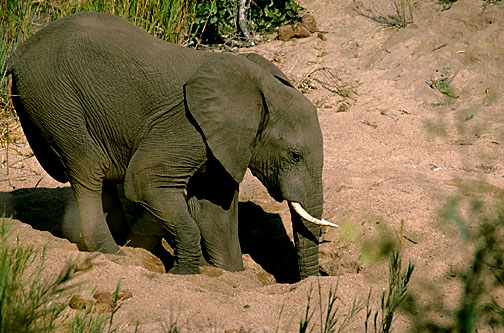
What about mating?

During the mating season each female may be in heat for only a few days, so the distribution of sexually reproductive cows is constantly fluctuating. Their gestation period is 22 months. The long pregnancy means that the infant is born during the wet season when conditions are optimal for survival. At birth the average calf is 265 lbs. Once the female starts to breed, she may produce an infant every 3 to 4 years. The period of greatest female fertility is between ages of 25-45. Male elephants aged 30 or older are able to successfull compete to mate with females.
Click on the Elephant to visit some Elephant Conservation Links!!

HOME
Elephant lovers have visited this page since Feb.2, 2000